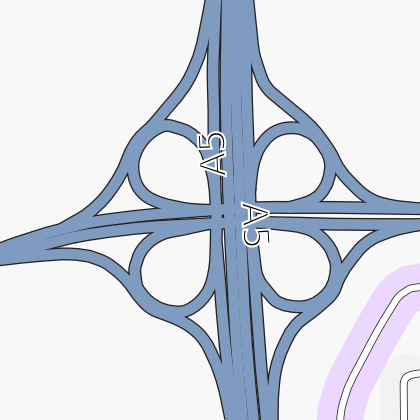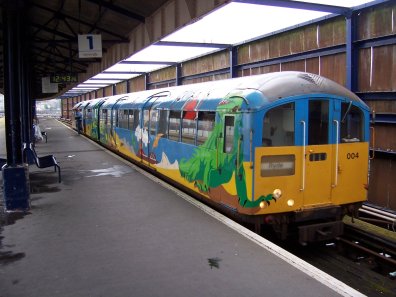Its been another high-traffic week on the OSM mailing lists, so lets get ready for a whistle-stop tour to the world of OSM.
The legal debate continues, but the focus has shifted to an attempt to aggregate information about Case Law, Statute Law and general legal questions onto the Legal FAQ wiki page. The principal behind this is firstly to gather together information that we can present to a friendly (and perhaps charitable) copyright lawyer and secondly to get information about similar cases. There are a couple of papers that are definitely worth looking at, this one, written by Dr Charlotte Waelde from the AHRC Research Centre for Studies in Intellectual Property and Technology Law at the University of Edinburgh and this page from the Science Commons website. If reading a journal paper is just too much like hard work, Richard has summarised the main points of the paper here. If direct action is more your thing, some OSM users have been declaring their contributions Public Domain on this wiki page.
If you are new to OSM, Geo and OpenSource projects, there’s probably a lot of things that confuse you. If you are wondering what the difference is between GPX and GPS, head over to the glossary page of the wiki. If there’s a term you want defining, just add it without a definition and someone will update it before too long. There’s also a new mailing list for newbies – sign up here and start asking all those questions that have been bugging you.
There’s been a load of development going on in the OSM commuinty this week. Tom Higgy has written a script that will calibrate OSM image tiles letting you use them with the opensource Treck Buddy navigation software. Take a look at Tom’s work on his site. Next up, Mathew has been working on a new rendering engine that takes OSM data and produces a postscript file, an interesting new take on the rendering issue. The pragmitic developer says; “Maybe there is a use for it, maybe not. I just like hacking PostScript, so this seemed a sensible merge of two enjoyable things…”.
The “Applet” is the editing tool that you use when you click on the “Edit” tab on the OSM website. Its been around since the very beginning of OSM, the first version was written by Steve, the next by Tom Carden, the way support was put in by Imi and inbetween that a few other people have had a hack at it. The Yahoo imagery has prompted a fair bit of development work on the applet. Nick Burch put in some fixes a few weeks ago, and this week Dan Moore has made quite a few bug fixes, including enhanced panning and zooming functions – all of which are now on the live site.
Keith Sharp’s been bussy too, adding a script to extract polygons from the weekly planet dump – useful if you want to extract a particular area of data, rather than load the entire dataset. You can grab a copy here.
My personal “app of the week” is Franciso Santos’ fantastic new Yahoo! imagery plugin for JOSM. Download the plugin from here, then fire up JOSM and get ready for some productive mapping. The plugin works by caching image tiles via Firefox and then loading the image into JOSM – get more info here.

Putney Bridge as seen using the JOSM Yahoo! plugin
The tagging discussions have continued this week too. One problem that’s been identified is that there is currently no way to distinguish a tube station from another type of railway station. Currently we tag railway stations with:
railway=station
Robert “Jamie” Munro’s not happy though, “that’s just wrong”, he says, and he has a point. After all a railway station is not part of the railway, and so shouldn’t be tagged with “key: railway”. One suggestion is to allow multiple tags with the same key, something like:
railway=rail;subway;tramway
Whilst this is supported by XML, it is not currently supported by the OSM API. You can follow discussions about tagging and the OSM ontology here. There are a load of new proposed features that you can vote on this week too- take a look at this wiki page and have your say.
As the amount of data in the OSM database grows, and as the uses of OSM data become more sophisticated and diverse, the underlying data structure will become increasingly important. The idea of “superways” is not a new one, but David Earl has brought the matter to light this week, largely in response to mailing list discussions about tagging motorway junctions. David’s proposal is firstly to introduce the idea of a “superway” as a higher level structure on top of the existing ways, as well as encouraging the API and editors to enforce the existing “rules” of ways (they are contiguous, ordered, unidirectional, non-branching sets of segments). David sees several advantages of the proposed scheme; a road in a housing estate that has numerous branches for example, can be grouped as one object, likewise a complex road junction which is not a single node or a roundabout could also be represented as one object.
Basically all we’re trying to do is assign tags to groups of ways without having to do it to each way, or have an easy method of selecting multiple ways – John McKerrell
There are several strands to this debate, but primarily there is the need to represent real-world objects in the OSM database and however this is done it will involve some level of abstraction. Aled Morris makes a good point that the ability of a renderer to render a particular data-model should not affect the development of that data model. The problem is, that the output of renderers will inevitably affect the way people tag objects and the way people perceive the OSM data model. Nigel Magnay makes the point that whilst you could feasibly tag your way around many situations, this is an inefficient way of dealing with the underlying problem, and what we should be doing modeling the fundamentals properly. Of course different people have different ideas of what the “fundamentals” are and what “properly” is. The herding of cats springs to mind, but then this is all part of OSM’s open, community based way of doing things.
Thats all for this week. With all the new development thats been going on there’s plenty of new toys for every kind of mapper to play with – so get out there (or fire up JOSM) and have some fun.




